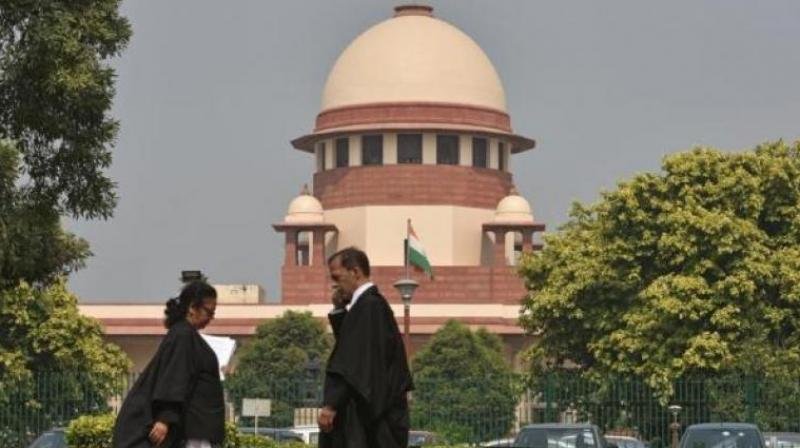McKinsey pegs poverty line at Rs 1,336 per month
இந்தியாவின் மக்கள் தொகையான 1.1 பில்லியனில் 55 சதவீதம் பேர்- அதாவது 645 மில்லியன் மக்கள் வறுமையிலேயே வாழ்வதாக ஆக்ஸ்போர்டு பல்கலைக் கழகத்தின் ஆய்வு ஒன்றில் கூறப்பட்டுவந்த நிலையில் நாட்டில் சுமார் 68 கோடி மக்களுக்கு அடிப்படை வசதி கிடைப்பதில் பற்றாக்குறை ஏற்பட்டிருப்பதாக சமீபத்தில் எடுக்கப் பட்ட மற்றொரு ஆய்வில் கண்டறியப் பட்டுள்ளது. பாதுகாப்பு,கல்வி, சுகாதாரம், தண்ணீர், வீடு, எரிபொருள், மற்றும் சமூகபாதுகாப்பு, உடைகள், பொழுதுபோக்கு போன்றவற்றில் குறைந்த பட்ச தேவையை பூர்த்தி செய்வது அடிப்படை வசதிகளாக கருதப்பட்டு வருகிறது. இவை அனைத்தும் பூர்த்தி செய்வதற்காக தனிநபர் பொருளாதார மதிப்பீடு மூலம் புதிய வரி உருவாக்கப்பட்டு வருகிறது. இவற்றில் ஒவ்வொன்றும் குறிப்பிட்ட விதிமுறைகளை பயன்படுத்துவதன் மூலம் ஒரு தனி மனிதனின் மாத தேவைக்கு சராசரியாக ஆயிரத்து 544 ரூபாய் தேவைப்படுகிறது என்பது கண்டறியப்பட்டுள்ளது. இதைக் கவனத்தில் கொண்டு அரசு அளித்து வரும் மானிய சலுகைகள் அனைத்தும் சாதாரண மக்களுக்கு சென்று சேரும் போது அவை தனி நபர் ஒருவருக்கு சுமார் ரூ.208 என்ற அளவிலேயே கிடைக்கிறது. இதன் மூலம் மேற்கண்ட அடிப்படை தேவைகளை பூர்த்தி செய்வதில் ஆயிரத்து 336 ரூபாய் பற்றாக்குறை ஏற்பட்டுள்ளது. இதன் படி வறுமைக்கோட்டில் வசிப்போரின் எண்ணிக்கை 56 சதவீதம் ஆகும். நகர்புறங்களை ஒப்பிடுகையில் வறுமைக்கோட்டிற்கு கீழ் வாழ்வோரின் எண்ணிக்கை 44 சதவீதமாக உள்ளது. அதே நேரத்தில் ஊரகப்பகுதிகளில் வசிப்பபோரின் எண்ணிக்கை 61 சதவீதமாக உள்ளது.பீகார் மாநிலம் முதலிடத்தை வகிப்பதாகவும், தொடர்ந்து உ.பி., ம.பி., ஜார்கண்ட், அசாம்,இமாச்சலபிரதேசம், பஞ்சாப், உத்தரகண்ட்,கேரளா, தமிழ்நாடு போன்ற மாநிலங்கள் அடுத்ததடுத்த இடங்களை பெற்றுள்ளதாகவும் ஆய்வில் கூறப்பட்டுள்ளது. முன்னதாக எடுக்கப்பட்ட சர்வேயில் உணவுப் பொருட்களின் விலைவாசி, 2008-இலிருந்து சராசரியாக 83 சதவிகிதம் அதிகரித்தது உள்பட நாட்டின் ஏழை மக்களுக்கு அழிவுகரமானதாக இருந்து வருகிறது தெரிந்தது. அதிலும் இந்திய அரசாங்கம் அடிக்கடி அறிவிக்கும் எரிபொருள் விலை உயர்வு அவர்களின் நிலையை மேலும் மோசமடையச் செய்துள்ளது என்றும் ஏறத்தாழ 350 மில்லியன் மக்கள் – அதாவது மக்கள் தொகையில் 35 சதவிகிதத்தினர் உணவுப் பாதுகாப்பின்றி இருப்பதாகவும், உடல்திறன் தேவைக்கு 80 சதவிகிதம் குறைவாக உண்பதாகவும் ஐக்கிய நாடுகள் உலக உணவுத் திட்டம் (UNWFP) சமீபத்தில் எச்சரித்திருந்தது. மேலும் இந்தியாவில் 1.5 மில்லியன் குழந்தைகள் ஊட்டச்சத்தின்மையாலும், 5 வயதுக்குட்பட்ட 43 சதவிகிதத்தினர் எடைக்குறைவாலும் பாதிப்படைந்துள்ளதாக யு.என்.டபிள்யூ.எப்.பி.யின் அறிக்கை சமீபத்தில் தெரிவித்துள்ளது. கிட்டத்தட்ட 11 மாநிலங்களில் 80 சதவிகிதம் குழந்தைகள் இரத்தசோகையுடன் இருப்பதுடன், இரத்தசோகை குழந்தைகள் விகிதம் 6 சதவிகிதம் கடந்த 6 ஆண்டுகளில் அதிகரித்துள்ளது. இந்நிலையில் நாளொன்றுக்கு ஒரு வீட்டின் வருவாய் 2 அமெரிக்க டாலர்கள் என கணக்கிலெடுத்துக் கொண்டால் சகாரா பகுதியிலுள்ள ஆபிரிக்க நாடுகளைவிட அதிக ஏழை மக்கள் இந்தியாவில் இருக்கின்றனர் என்பதோடு அதிகமட்டத்திலும் உள்ளனர் என இன்னொரு ஆய்வு கூறுகிறது. சகாரா பகுதியில் உள்ள ஆபிரிக்க நாடுகளில் 72.5 சதவீதம் அல்லது 551 மில்லியன் பேர் வறுமைக் கோட்டின் கீழ் வாழ்வதுடன் ஒப்பிட்டுப் பார்த்தால் இந்தியாவில் 75.6 சதவிகிதத்தினரோ அல்லது 82 மில்லியன் மக்களோ வறுமைக் கோட்டின் கீழே உள்ளனர் என்றும் தெரிவிக்கப் பட்டிருந்தது குறிப்பிடத்தக்க்து!
McKinsey pegs poverty line at Rs 1,336 per month
A Global consultancy firm pegged a new level for poverty or empowerment line — at Rs 1,336 per month per person as against the poverty line prescribed by the government at around Rs 870 per month per person. McKinsey, in a report, said the empowerment line determines the level of consumption required for an individual to fulfill his/her basic need for food, energy, housing, drinking water, sanitation, health care, education and social security at a level sufficient to achieve a modest standard of living. According to the report — From poverty to empowerment: India’s imperative for jobs, growth, and effective basic services — 56% of the population lacks the means to meet essential needs as consumption level falls below Rs 1,336 per person per month or almost Rs 6,700 per month for a family of five. This translates to 680 million people whose consumption levels across both rural and urban area of the country fall short of this mark. The report said India can bring more than 90% of its people above the empowerment line in a decade by implementing inclusive reforms. Steps are needed to stimulate investment, job creation, farm productivity and improve the delivery of basic services. These reforms, the report said, could potentially allow India to achieve an average GDP growth of 7.8% between 2012-22. This could lift 580 million people above the empowerment line, leaving 100 million or 7% of the population below it in 2022 and 17 million or about 1% below the official poverty line. But, if inclusive reforms do not happen, the report said, around 470 million Indians or 36% of the population would remain below empowerment line in 2022 and 12% of the population would be languishing below the official poverty line. If inclusive reforms are implemented, 115 million non-farm jobs would be created by 2022, which will increase the spending power of those persons who migrated from agricultural sector. The inclusive reforms will also increase the farm productivity from the present level of 2.3 tonnes per hectare to about 4 tonness per hectare by 2022. However, the inclusive growth, cannot be realized without public spending going up substantially. According to the report, the public spending on social services must double from Rs 5.7 lakh crore in 2012 to Rs 10.9 lakh crore in 2022 to fill the critical gap in the social infrastructure.






